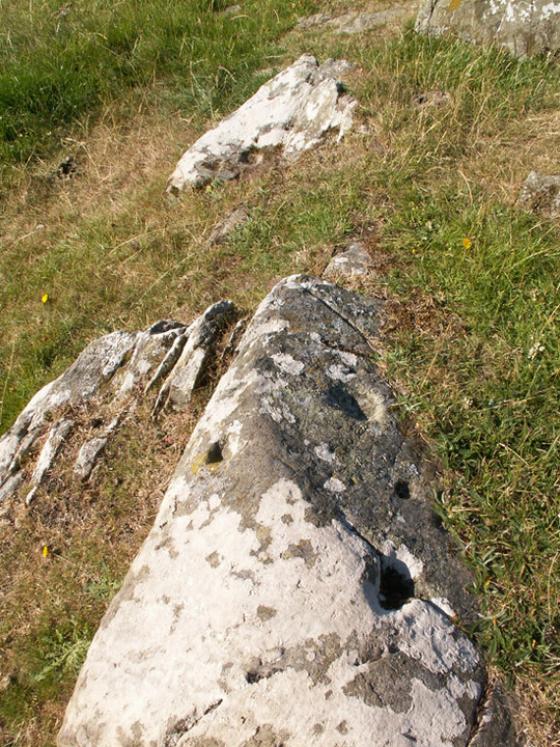
The stone basking in today’s Gallovidian sunshine with the valley of the Water of Fleet to the North.

The stone basking in today’s Gallovidian sunshine with the valley of the Water of Fleet to the North.

The crude, cattle-rubbed shape gives the lone stone a variety of profiles.

A Flavian (1st Century) Roman fortlet lies under the bales in the field beyond the stone.

Looking South – to the cemetery gates and Gatehouse of Fleet beyond.

Looking West.

28-12-06
wolfy

28-12-06
wolfy

28-12-06
wolfy

28-12-06
wolfy
This is an easy stone to visit if you are in the area. Once in Gatehouse go down Church Street (directly opposite the Granite clock tower in the High Street). Stay on this street as it passes through rows of very sweet little white Gallovidian cottages and Church Street becomes Memory Lane (honest). Follow Memory Lane till the houses run out and a cemetery comes into view. Drive past the cemetery and park at the little parking bay just beyond. About a hundred yards into the field immediately beyond the parking bay is the stone . There is a good wee swing gate for access.
Today there were no jumpy stirks, nervous bulls, Belted Galloways or even a Texel sheep in the field. This lone four foot stone stood baking in 26 degrees of blazing Galloway sunshine. It is highly weathered and has suffered a fair old bit of cattle rubbing which reveals some surprising profiles.
It appeared on the 1854 OS sheets but is thought by some to have been fairly recently erected. At a point in the recent past it might well have been in a horizontal position on the ground for there are plough scars visible on one side of the stone.
A few hundred yards to the South West lies a barrow cemetery. A hundred yards to the North West (in the next field) is a wee roman fortlet – as yet the most westernly known node on the Flavian road system in Galloway. There is a settlement in the woods beyond the parking bays. A lot of history here and hereabouts but whether this standing stone is an ancient one or not is uncertain. Far above, the masts on Cambret Hill gaze down and say nowt!



























































































































































